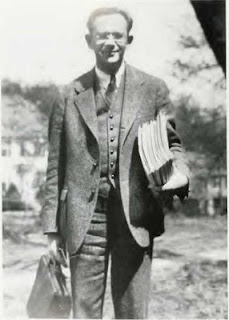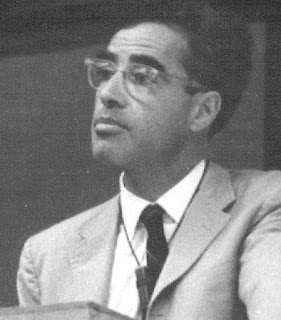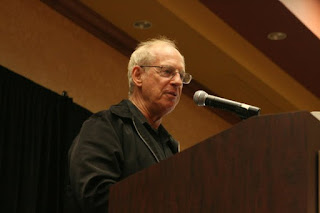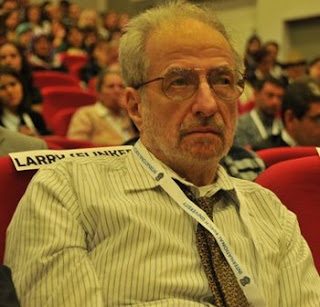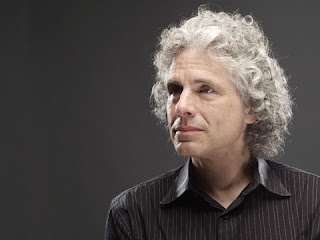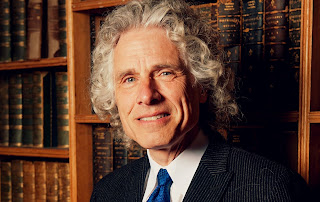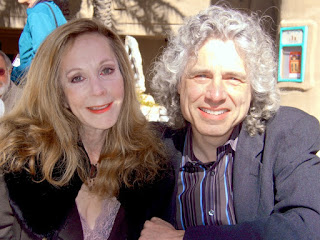JEAN PIAGET (1896 –1980), A TWENTIETH CENTURY SWISS DEVELOPMENTAL PSYCHOLOGIST.
“Every response, whether it be an act directed towards the outside world or an act internalized as thought, takes the form of an adaptation or, better, of a re-adaptation.”
“Formal logic, or logistics, is simply the axiomatics of states of equilibrium of thought, and the positive science corresponding to this axiomatics is none other than the psychology of thought.”
“The individual acts only if he experiences a need, i.e., if the equilibrium between the environment and the organism is momentarily upset, and action tends to re-establish the equilibrium, i.e., to re-adapt the organism (Claparède).”
“Children should be able to do their own experimenting and their own research. Teachers, of course, can guide them by providing appropriate materials, but the essential thing is that in order for a child to understand something, he must construct it himself, he must re-invent it. Every time we teach a child something, we keep him from inventing it himself. On the other hand that which we allow him to discover by himself will remain with him visibly for the rest of his life.”
“I know some very intelligent philosophers, not at all dogmatic, who believe that “science” cannot introduce the concept of finality in the analysis and explanation of vital processes, but that “philosophy” equally cannot arrive at an adequate concept of organic life without introducing finality. It is not a question here of moral or other values, but rather of a concept peculiar to philosophical biology as opposed to biology. Indeed, one such philosopher concluded, drawing inspiration from Merleau-Ponty, that science can “never” give an adequate explanation of the concept of the “whole structure” of the organism.”
“A response is thus a particular case of interaction between the external world and the subject, but unlike physiological interactions, which are of a material nature and involve an internal change in the bodies which are present, the responses studied by psychology are of a functional nature and are achieved at greater and greater distances in space (perception, etc.) and in time (memory, etc.) besides following more and more complex paths (reversals, detours, etc.).”
“According to Claparède, feelings appoint a goal for behaviour, while intelligence merely provides the means (the "technique"). But there exists an awareness of ends as well as of means, and this continually modifies the goals of action.”
“… to avoid the difficulties of teleological language, adaptation must be described as an equilibrium between the action of the organism on the environment and vice versa.”
“… intelligence, the most plastic and at the same time the most durable structural equilibrium of behaviour, is essentially a system of living and acting operations.”
“Every structure is to be thought of as a particular form of equilibrium, more or less stable within its restricted field and losing its stability on reaching the limits of the field.”
“We shall simply say then that every action involves an energetic or affective aspect and a structural or cognitive aspect, which, in fact, unites the different points of view already mentioned.”
“A fact is first an answer to a question. If Sartre had consulted psychologists before judging them in the light of his own genius, he would have learned that they do not wait on the accident but begin by setting themselves problems.”
“… theory or have remained unaffected by them. It is true that a fact can sometimes appear to resemble an “accident,” as in the case of the apple that fell near Newton, but the accident only became a “fact” because Newton asked certain questions.”
“Thus arises the solution proposed by the so-called Gestalt psychology: behaviour involves a "total field" embracing subject and objects, and the dynamics of this field constitutes feeling (Lewin), while its structure depends on perception, effector-functions, and intelligence.”
“We shall adopt an analogous formula, with the reservation that feelings and cognitive configurations do not depend solely on the existing "field," but also on the whole previous history of the acting subject.”
“But if all behaviour, without exception, thus implies an energetics or an "economy", forming its affective aspect, the interaction with the environment which it instigates likewise requires a form or structure to determine the various possible circuits between subject and object.”
“But these structures, forming different levels, are to be regarded as succeeding one another according to a law of development, such that each one brings about a more inclusive and stable equilibrium for the processes that emerge from the preceding level.”
“According to Claparède, feelings appoint a goal for behaviour, while intelligence merely provides the means (the "technique"). But there exists an awareness of ends as well as of means, and this continually modifies the goals of action. In so far as feeling directs behaviour by attributing a value to its ends, we must confine ourselves to saying that it supplies the energy necessary for action, while knowledge impresses a structure on it. Thus arises the solution proposed by the so-called Gestalt psychology: behaviour involves a "total field" embracing subject and objects, and the dynamics of this field constitutes feeling (Lewin), while its structure depends on perception, effector-functions, and intelligence.”
“This new philosophical psychology can in this respect be traced back to Maine de Biran, for even if in his time scientific psychology was unaware of its autonomy, and even if Biranian psychology was only critical of that of the empiricists, Biran believed in the Kantian distinction of noumena and phenomena and took care to limit his inquiry to the latter alone, which did not prevent him from extending it in the form of idealist speculations.”
“Every psychological explanation comes sooner or later to lean either on biology or on logic (or on sociology, but this in turn leads to the same alternatives).”
“For some writers mental phenomena become intelligible only when related to the organism. This view is of course inescapable when we study the elementary functions (perception, motor functions, etc.) in which intelligence originates. But we can hardly see neurology explaining why 2 and 2 make 4, or why the laws of deduction are forced on the mind of necessity.”
“Every response, whether it be an act directed towards the outside world or an act internalized as thought, takes the form of an adaptation or, better, of a re-adaptation.”
~ Jean Piaget, The Psychology of Intelligence
“Formal logic, or logistics, is simply the axiomatics of states of equilibrium of thought, and the positive science corresponding to this axiomatics is none other than the psychology of thought.”
~ Jean Piaget, The Psychology of Intelligence
“The individual acts only if he experiences a need, i.e., if the equilibrium between the environment and the organism is momentarily upset, and action tends to re-establish the equilibrium, i.e., to re-adapt the organism (Claparède).”
~ Jean Piaget, The Psychology of Intelligence
“Children should be able to do their own experimenting and their own research. Teachers, of course, can guide them by providing appropriate materials, but the essential thing is that in order for a child to understand something, he must construct it himself, he must re-invent it. Every time we teach a child something, we keep him from inventing it himself. On the other hand that which we allow him to discover by himself will remain with him visibly for the rest of his life.”
~ Jean Piaget, Play and Development: A Symposium
“I know some very intelligent philosophers, not at all dogmatic, who believe that “science” cannot introduce the concept of finality in the analysis and explanation of vital processes, but that “philosophy” equally cannot arrive at an adequate concept of organic life without introducing finality. It is not a question here of moral or other values, but rather of a concept peculiar to philosophical biology as opposed to biology. Indeed, one such philosopher concluded, drawing inspiration from Merleau-Ponty, that science can “never” give an adequate explanation of the concept of the “whole structure” of the organism.”
~ Jean Piaget, Insights and Illusions of Philosophy
“A response is thus a particular case of interaction between the external world and the subject, but unlike physiological interactions, which are of a material nature and involve an internal change in the bodies which are present, the responses studied by psychology are of a functional nature and are achieved at greater and greater distances in space (perception, etc.) and in time (memory, etc.) besides following more and more complex paths (reversals, detours, etc.).”
~ Jean Piaget, The Psychology of Intelligence
“According to Claparède, feelings appoint a goal for behaviour, while intelligence merely provides the means (the "technique"). But there exists an awareness of ends as well as of means, and this continually modifies the goals of action.”
~ Jean Piaget, The Psychology of Intelligence
“… to avoid the difficulties of teleological language, adaptation must be described as an equilibrium between the action of the organism on the environment and vice versa.”
~ Jean Piaget, The Psychology of Intelligence
“… intelligence, the most plastic and at the same time the most durable structural equilibrium of behaviour, is essentially a system of living and acting operations.”
~ Jean Piaget, The Psychology of Intelligence
“Every structure is to be thought of as a particular form of equilibrium, more or less stable within its restricted field and losing its stability on reaching the limits of the field.”
~ Jean Piaget, The Psychology of Intelligence
“We shall simply say then that every action involves an energetic or affective aspect and a structural or cognitive aspect, which, in fact, unites the different points of view already mentioned.”
~ Jean Piaget, The Psychology of Intelligence
“A fact is first an answer to a question. If Sartre had consulted psychologists before judging them in the light of his own genius, he would have learned that they do not wait on the accident but begin by setting themselves problems.”
~ Jean Piaget, Insights and Illusions of Philosophy
“… theory or have remained unaffected by them. It is true that a fact can sometimes appear to resemble an “accident,” as in the case of the apple that fell near Newton, but the accident only became a “fact” because Newton asked certain questions.”
~ Jean Piaget, Insights and Illusions of Philosophy
“Thus arises the solution proposed by the so-called Gestalt psychology: behaviour involves a "total field" embracing subject and objects, and the dynamics of this field constitutes feeling (Lewin), while its structure depends on perception, effector-functions, and intelligence.”
~ Jean Piaget, The Psychology of Intelligence
“We shall adopt an analogous formula, with the reservation that feelings and cognitive configurations do not depend solely on the existing "field," but also on the whole previous history of the acting subject.”
~ Jean Piaget, The Psychology of Intelligence
“But if all behaviour, without exception, thus implies an energetics or an "economy", forming its affective aspect, the interaction with the environment which it instigates likewise requires a form or structure to determine the various possible circuits between subject and object.”
~ Jean Piaget, The Psychology of Intelligence
“But these structures, forming different levels, are to be regarded as succeeding one another according to a law of development, such that each one brings about a more inclusive and stable equilibrium for the processes that emerge from the preceding level.”
~ Jean Piaget, The Psychology of Intelligence
“According to Claparède, feelings appoint a goal for behaviour, while intelligence merely provides the means (the "technique"). But there exists an awareness of ends as well as of means, and this continually modifies the goals of action. In so far as feeling directs behaviour by attributing a value to its ends, we must confine ourselves to saying that it supplies the energy necessary for action, while knowledge impresses a structure on it. Thus arises the solution proposed by the so-called Gestalt psychology: behaviour involves a "total field" embracing subject and objects, and the dynamics of this field constitutes feeling (Lewin), while its structure depends on perception, effector-functions, and intelligence.”
~ Jean Piaget, The Psychology of Intelligence
“This new philosophical psychology can in this respect be traced back to Maine de Biran, for even if in his time scientific psychology was unaware of its autonomy, and even if Biranian psychology was only critical of that of the empiricists, Biran believed in the Kantian distinction of noumena and phenomena and took care to limit his inquiry to the latter alone, which did not prevent him from extending it in the form of idealist speculations.”
~ Jean Piaget, Insights and Illusions of Philosophy
“Every psychological explanation comes sooner or later to lean either on biology or on logic (or on sociology, but this in turn leads to the same alternatives).”
~ Jean Piaget, The Psychology of Intelligence
“For some writers mental phenomena become intelligible only when related to the organism. This view is of course inescapable when we study the elementary functions (perception, motor functions, etc.) in which intelligence originates. But we can hardly see neurology explaining why 2 and 2 make 4, or why the laws of deduction are forced on the mind of necessity.”
~ Jean Piaget, The Psychology of Intelligence










